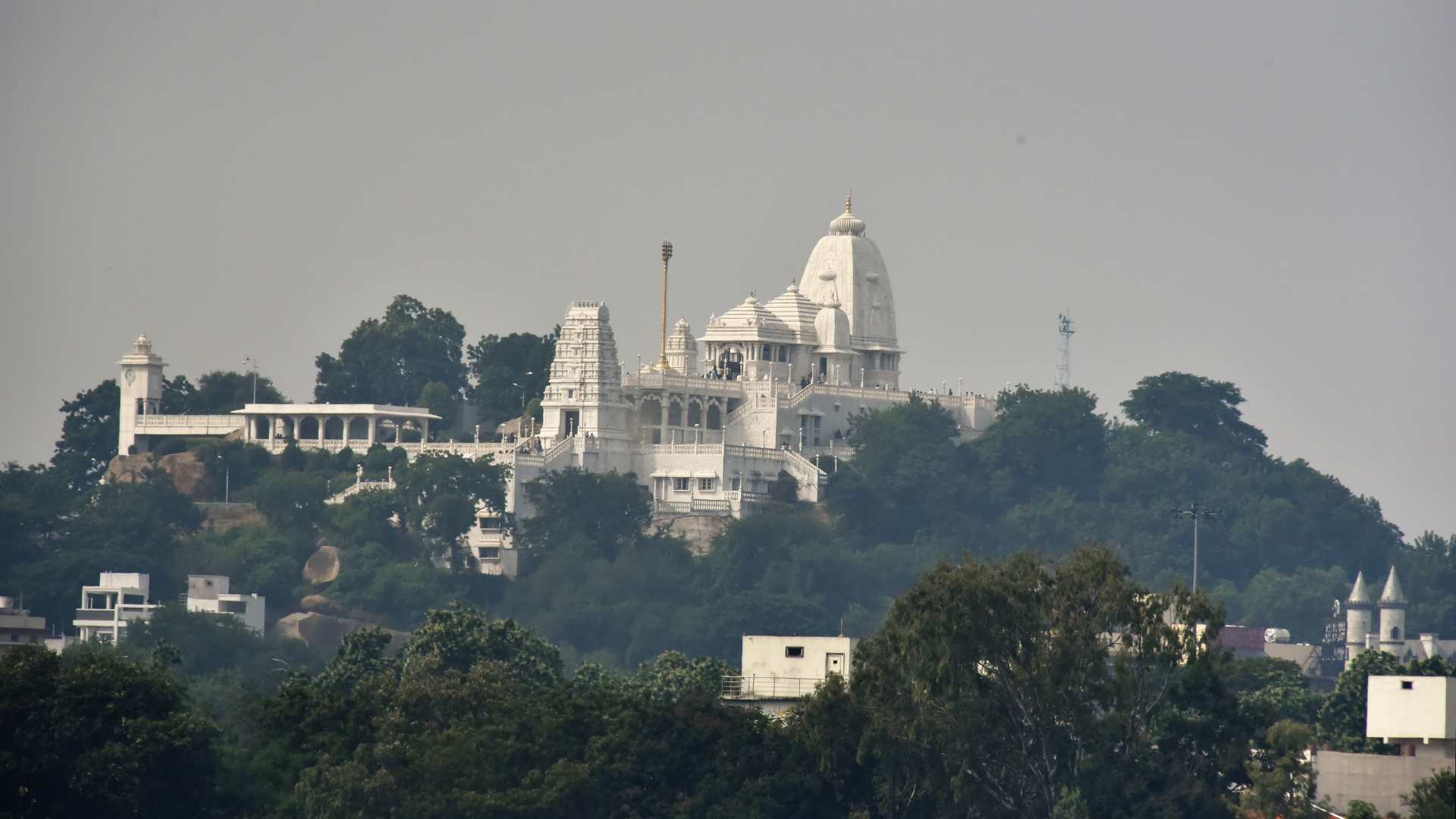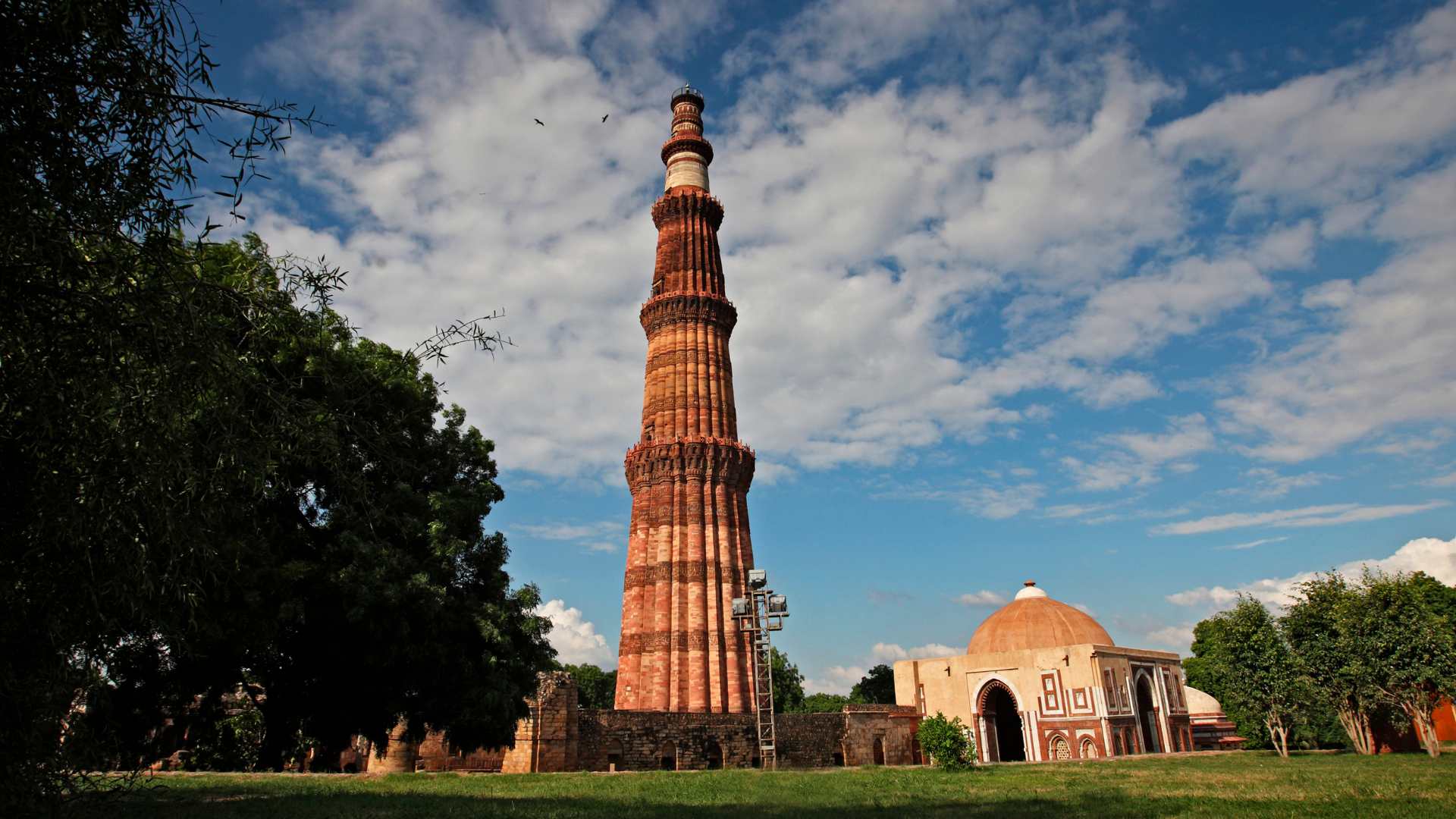Table of Contents
ToggleIndia is home to some of the most stunning and ecologically diverse national parks in the world. With landscapes ranging from dense tropical forests to vast grasslands and rugged mountain terrains, these parks offer a glimpse into the country’s incredible biodiversity.
The top 10 national parks in India serve as vital sanctuaries for endangered species such as the Bengal tiger, Asiatic lion, and one-horned rhinoceros. They also support ecosystems teeming with birds, reptiles, and flora.
Visitors can embark on thrilling safaris, scenic treks, or peaceful boat rides, experiencing the beauty of India’s wildlife up close.
These parks play a pivotal role in conservation and are also major destinations for eco-tourism. They allow travellers to immerse themselves in nature’s untouched beauty while learning about India’s ongoing conservation efforts.
What Are the Best National Parks to Visit in India?

India boasts numerous national parks, but the best ones for wildlife enthusiasts include Jim Corbett, Ranthambore, Kaziranga, and Sundarbans. Jim Corbett is ideal for tiger spotting and bird watching, while Kaziranga is known for its one-horned rhinoceros.
Ranthambore offers a unique blend of history and wildlife, with the iconic Ranthambore Fort within the park. Sundarbans, a UNESCO World Heritage Site, is famous for its unique mangrove ecosystem and Bengal tigers.
Each of these parks provides a rich wildlife experience with different ecosystems, making them must-visit destinations for nature lovers and photographers.
Exploring these parks gives visitors insight into India’s conservation efforts and the opportunity to witness some of the planet’s most majestic animals.
Which National Park in India is Famous for Tigers?
Ranthambore National Park in Rajasthan is one of India’s most famous tiger reserves. Known as a “tiger’s paradise,” it offers one of the best opportunities to spot Bengal tigers in their natural habitat.
The park’s mix of forests, grasslands, and lakes provides an ideal environment for tigers. Jim Corbett National Park and Bandhavgarh National Park are also popular destinations for tiger spotting.
These parks are crucial to Project Tiger, India’s national conservation initiative to protect the endangered Bengal tiger.
Safari tours in these parks offer visitors a chance to see these magnificent predators up close while contributing to their conservation.
What is Project Tiger, and How Does It Help National Parks?

Project Tiger, launched in 1973, is a pioneering conservation initiative by the Indian government aimed at protecting Bengal tigers from extinction.
The project’s primary goal is to safeguard tiger habitats and combat poaching. By establishing protected areas like Jim Corbett, Ranthambore, and Bandhavgarh, Project Tiger has significantly contributed to increasing tiger populations in India.
The project also helps maintain healthy ecosystems, which in turn support other wildlife. Government funding, infrastructure improvements, and heightened protection from illegal activities benefit national parks.
Today, Project Tiger is considered one of the most successful wildlife conservation programs globally. It plays a critical role in tigers’ survival and preserving India’s biodiversity.
How Can I Plan a Wildlife Safari in India’s National Parks?
Planning a wildlife safari in India’s national parks requires early preparation, as these parks are popular, especially during peak seasons.
Most parks like Jim Corbett, Kaziranga, and Ranthambore allow visitors to book safaris online through official websites.
Jeep safaris are the most common, though some parks offer boat safaris (like Periyar and Sundarbans) or elephant safaris.
It is recommended that you choose a knowledgeable guide who can enhance the experience with insights into the local wildlife.
Ideal visiting times are during the dry months when animals gather near water sources. Accommodations range from luxury lodges to eco-friendly resorts located near the parks. Always follow local guidelines to ensure safety and wildlife protection during the safari.
Which National Parks in India Are Unesco World Heritage Sites?
India is proud to have several national parks designated as UNESCO World Heritage Sites for their outstanding biodiversity and ecological significance.
Kaziranga National Park in Assam is recognized for its large population of one-horned rhinoceroses and exceptional conservation efforts.
The Sundarbans National Park in West Bengal, famous for its mangrove ecosystem and Bengal tigers, also holds this prestigious title.
These parks are vital for preserving endangered species and are globally recognized for their importance in maintaining the planet’s biodiversity.
Being UNESCO sites helps bring international attention to conservation efforts, providing greater protection and fostering eco-tourism.
What Makes India’s National Parks Unique for Eco-tourism?

India’s national parks offer diverse ecosystems, from tropical rainforests to high-altitude deserts, making them ideal for eco-tourism.
Jim Corbett, Ranthambore, and Kaziranga are popular destinations that combine adventure with education. Visitors can experience jeep safaris, boat rides, bird watching, and guided treks while learning about conservation and wildlife preservation.
Eco-friendly accommodations and responsible tourism practices are increasingly promoted to minimize the environmental impact.
What sets India apart is the cultural richness surrounding many parks, such as the ancient temples near Ranthambore or Buddhist monasteries in Hemis National Park.
The blend of culture and conservation makes India’s national parks a unique experience for eco-conscious travelers.
Top 10 National Parks in India
1. Jim Corbett National Park – The Oldest National Park in India
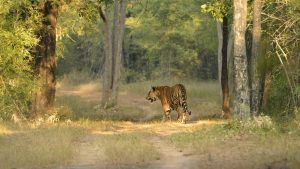
Jim Corbett National Park, established in 1936 as Hailey National Park, is India’s first national park. It is located in Uttarakhand’s Nainital district, named after Jim Corbett, a well-known conservationist.
Spanning over 1,318 square kilometers, the park plays a key role in India’s conservation history and is a part of the larger Corbett Tiger Reserve.
Famous for its Bengal tiger population, it also supports diverse wildlife, including leopards, elephants, and various deer species.
A major destination for wildlife enthusiasts, Jim Corbett promotes eco-tourism and is a significant part of the Project Tiger initiative, which began in 1973 to protect the endangered tiger population.
Jim Corbett National Park Details
| Attribute | Details |
| National Park Name | Jim Corbett National Park |
| Location | Nainital district, Uttarakhand |
| Area | 1,318 square kilometers |
| Year of Establishment | 1936 |
| Best Time to Visit | November to June |
| Main Species | Bengal tigers, leopards, elephants, deer, birds |
| Conservation Initiatives | Part of Project Tiger (since 1973) |
| Tourism Activities | Jeep safaris, elephant rides, bird watching |
| Ecosystem Type | Sub-Himalayan with marshy areas and dense forests |
| Wildlife Safaris | Yes, several zones for different safari experiences |
| Tourism Impact | Popular for eco-tourism, attracts photographers, nature lovers |
| Environmental Challenges | Poaching, habitat destruction, and human-wildlife conflict |
2. Kaziranga National Park – The Land of the One-Horned Rhino
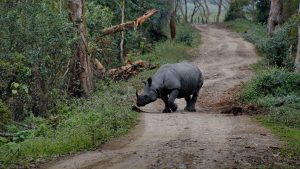
Kaziranga National Park, located in Assam, is a UNESCO World Heritage Site known for its population of the endangered one-horned rhinoceros.
It covers 430 square kilometers and is a significant conservation area for rhinos, elephants, and other wildlife, including tigers and wild buffalo. Its wetlands and tall elephant grasslands create a perfect environment for diverse flora and fauna.
Kaziranga has played a critical role in rhino conservation, and its unique biodiversity makes it a must-visit for wildlife lovers. The park is also a great spot for bird-watching due to the variety of migratory birds that flock here.
Kaziranga National Park Details
| Attribute | Details |
| National Park Name | Kaziranga National Park |
| Location | Assam |
| Area | 430 square kilometers |
| Year of Establishment | 1905 |
| Best Time to Visit | November to April |
| Main Species | One-horned rhinoceros, elephants, tigers, wild buffalo, birds |
| Conservation Initiatives | UNESCO World Heritage Site |
| Tourism Activities | Jeep safaris, elephant rides, bird-watching |
| Ecosystem Type | Wetlands, tall elephant grasslands |
| Wildlife Safaris | Yes, jeep and elephant safaris |
| Tourism Impact | Popular for rhino tourism and bird-watching |
| Environmental Challenges | Flooding, poaching, and habitat degradation |
3. Ranthambore National Park – A Tiger’s Paradise

Ranthambore National Park, located in Rajasthan, is one of India’s largest and most famous national parks. Covering 1,334 square kilometers, it is renowned for its Bengal tiger population and historical Ranthambore Fort, which adds a unique cultural element to the park.
Ranthambore is a prime location for spotting tigers in the wild. The park also hosts various species, including sloth bears, leopards, and a wide array of birds. The park’s open grasslands and lakes make it a picturesque destination for wildlife photography.
Ranthambore National Park Details
| Attribute | Details |
| National Park Name | Ranthambore National Park |
| Location | Rajasthan |
| Area | 1,334 square kilometers |
| Year of Establishment | 1955 |
| Best Time to Visit | October to April |
| Main Species | Bengal tigers, leopards, sloth bears, deer, birds |
| Conservation Initiatives | Part of Project Tiger |
| Tourism Activities | Jeep safaris, wildlife photography |
| Ecosystem Type | Open grasslands, lakes, dry deciduous forest |
| Wildlife Safaris | Yes, several zones for different safari experiences |
| Tourism Impact | Attracts photographers and wildlife enthusiasts |
| Environmental Challenges | Habitat degradation, human-wildlife conflict |
4. Sundarbans National Park – Largest Mangrove Forest in the World

Sundarbans National Park, located in West Bengal, is the world’s largest forest and a UNESCO World Heritage Site. Spanning 1,330 square kilometers, the park is home to unique Bengal tigers that have adapted to living in a mangrove environment.
The Sundarbans is also known for its estuarine ecosystems, which feature a variety of aquatic species, reptiles, and migratory birds.
This park is a major destination for eco-tourists and wildlife photographers, offering boat safaris through the dense mangrove forests. It is an essential habitat for endangered species, including the Bengal tiger and the saltwater crocodile.
Sundarbans National Park Details
| Attribute | Details |
| National Park Name | Sundarbans National Park |
| Location | West Bengal |
| Area | 1,330 square kilometers |
| Year of Establishment | 1984 |
| Best Time to Visit | September to March |
| Main Species | Bengal tigers, saltwater crocodiles, spotted deer, birds |
| Conservation Initiatives | UNESCO World Heritage Site |
| Tourism Activities | Boat safaris, bird-watching |
| Ecosystem Type | Mangrove forest and estuarine ecosystems |
| Wildlife Safaris | Yes, boat safaris |
| Tourism Impact | Popular for eco-tourism, attracts wildlife photographers |
| Environmental Challenges | Rising sea levels, habitat destruction, poaching |
5. Bandhavgarh National Park – The Tiger Den of Central India
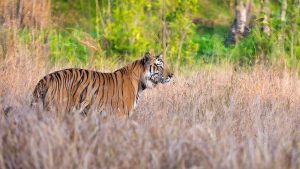
Bandhavgarh National Park, located in Madhya Pradesh, is known for its high density of Bengal tigers, making it one of India’s best places for tiger sightings.
Spanning 1,536 square kilometers, this park is famous for its rugged terrain, steep ridges, and dense forests. It also has a rich historical significance, with ancient caves and ruins scattered across the park.
Apart from tigers, Bandhavgarh is home to various wildlife, including leopards, deer, and a wide array of bird species. It is a popular destination for wildlife photographers and adventurers alike.
Bandhavgarh National Park Details
| Attribute | Details |
| National Park Name | Bandhavgarh National Park |
| Location | Madhya Pradesh |
| Area | 1,536 square kilometers |
| Year of Establishment | 1968 |
| Best Time to Visit | October to June |
| Main Species | Bengal tigers, leopards, deer, birds |
| Conservation Initiatives | Part of Project Tiger |
| Tourism Activities | Jeep safaris, wildlife photography |
| Ecosystem Type | Deciduous forests, rugged hills |
| Wildlife Safaris | Yes, several zones for tiger safaris |
| Tourism Impact | Popular for tiger tourism and eco-tourism |
| Environmental Challenges | Habitat degradation, human-wildlife conflict |
6. Gir National Park – Last Home of the Asiatic Lion

Gir National Park, located in Gujarat, is the last remaining habitat for the endangered Asiatic lion. Spanning 1,412 square kilometers, Gir is a unique conservation area that successfully brought the Asiatic lion back from the brink of extinction.
The park’s dry deciduous forests, rocky hills, and water bodies make it a haven for a variety of wildlife.
Aside from lions, Gir is home to leopards, hyenas, and numerous species of birds and reptiles. It offers a variety of safari experiences, and visitors can explore the park’s rugged landscape while witnessing its thriving lion population.
Gir National Park Details
| Attribute | Details |
| National Park Name | Gir National Park |
| Location | Gujarat |
| Area | 1,412 square kilometers |
| Year of Establishment | 1965 |
| Best Time to Visit | October to May |
| Main Species | Asiatic lions, leopards, hyenas, birds, reptiles |
| Conservation Initiatives | Asiatic lion conservation |
| Tourism Activities | Jeep safaris, bird-watching |
| Ecosystem Type | Dry deciduous forest, rocky hills |
| Wildlife Safaris | Yes, several zones for lion safaris |
| Tourism Impact | Popular for lion tourism, eco-tourism |
| Environmental Challenges | Human-wildlife conflict, habitat fragmentation |
7. Periyar National Park – Wildlife and Lake Cruises in Kerala

Periyar National Park, located in Kerala, is a renowned wildlife reserve known for its elephant population and scenic Periyar Lake. Spanning 925 square kilometers, it offers a unique wildlife experience with boat safaris that allow visitors to observe animals along the lake’s edge. The park is also home to tigers, leopards, and a variety of bird species.
Periyar is a well-preserved ecosystem in the Western Ghats, known for its lush tropical forests and biodiversity. It is a popular destination for eco-tourism and adventure enthusiasts.
Periyar National Park Details
| Attribute | Details |
| National Park Name | Periyar National Park |
| Location | Kerala |
| Area | 925 square kilometers |
| Year of Establishment | 1950 |
| Best Time to Visit | November to April |
| Main Species | Elephants, tigers, leopards, birds, reptiles |
| Conservation Initiatives | Part of Project Tiger |
| Tourism Activities | Boat safaris, bird-watching, jungle walks |
| Ecosystem Type | Tropical forests, lakes, and wetlands |
| Wildlife Safaris | Yes, boat safaris and guided walks |
| Tourism Impact | Popular for eco-tourism, attracts wildlife lovers |
| Environmental Challenges | Deforestation, human-wildlife conflict |
8. Kanha National Park – Inspiration Behind ‘The Jungle Book

Kanha National Park, located in Madhya Pradesh, is famous for inspiring Rudyard Kipling’s “The Jungle Book.” Spanning over 940 square kilometers, Kanha is one of India’s most picturesque and well-maintained parks, known for its dense sal forests, meadows, and diverse wildlife, including the endangered barasingha (swamp deer).
Kanha is also a major tiger reserve and offers excellent wildlife viewing opportunities. The park is famous for its successful conservation programs and is a popular destination for wildlife tourism.
Kanha National Park Details
| Attribute | Details |
| National Park Name | Kanha National Park |
| Location | Madhya Pradesh |
| Area | 940 square kilometers |
| Year of Establishment | 1955 |
| Best Time to Visit | October to June |
| Main Species | Bengal tigers, barasingha, leopards, birds |
| Conservation Initiatives | Part of Project Tiger, barasingha conservation |
| Tourism Activities | Jeep safaris, wildlife photography |
| Ecosystem Type | Sal forests, grasslands, meadows |
| Wildlife Safaris | Yes, several zones for safari experiences |
| Tourism Impact | Popular for tiger tourism and eco-tourism |
| Environmental Challenges | Habitat degradation, poaching |
9. Nagarhole National Park – A Jewel of the Western Ghats
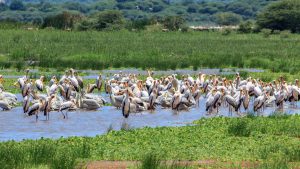
Nagarhole National Park, also known as Rajiv Gandhi National Park, is in Karnataka and part of the Nilgiri Biosphere Reserve.
Spanning over 643 square kilometers, the park is known for its rich wildlife, including tigers, elephants, leopards, and its stunning landscapes of forests, hills, and streams.
Nagarhole offers excellent opportunities for wildlife safaris and is a critical conservation area for elephants and tigers. The park is a popular destination for eco-tourism and nature enthusiasts.
Nagarhole National Park Details
| Attribute | Details |
| National Park Name | Nagarhole National Park (Rajiv Gandhi National Park) |
| Location | Karnataka |
| Area | 643 square kilometers |
| Year of Establishment | 1988 |
| Best Time to Visit | October to May |
| Main Species | Tigers, elephants, leopards, deer, birds |
| Conservation Initiatives | Part of Project Tiger and elephant conservation efforts |
| Tourism Activities | Jeep safaris, boat rides |
| Ecosystem Type | Tropical forests, rivers, and hills |
| Wildlife Safaris | Yes, several safari zones |
| Tourism Impact | Popular for tiger and elephant tourism |
| Environmental Challenges | Habitat loss, human-wildlife conflict |
10. Hemis National Park – The High-Altitude Wonderland

Hemis National Park, located in the Ladakh region of Jammu & Kashmir, is the largest national park in India, covering 4,400 square kilometers.
Known for its breathtaking landscapes and high-altitude biodiversity, it is home to the elusive snow leopard, which is its prime attraction. Hemis is also famous for its Buddhist monasteries and offers visitors a serene, spiritual environment.
Hemis National Park is a unique blend of wildlife and culture, making it a popular destination for trekkers, wildlife enthusiasts, and spiritual seekers. The park’s harsh climate and remote location add to its allure.
Hemis National Park Details
| Attribute | Details |
| National Park Name | Hemis National Park |
| Location | Ladakh, Jammu & Kashmir |
| Area | 4,400 square kilometers |
| Year of Establishment | 1981 |
| Best Time to Visit | May to September |
| Main Species | Snow leopards, bharal (blue sheep), Tibetan wolves, birds |
| Conservation Initiatives | Snow leopard conservation |
| Tourism Activities | Trekking, monastery visits, wildlife spotting |
| Ecosystem Type | High-altitude desert, rugged mountains |
| Wildlife Safaris | Yes, trekking-based safaris |
| Tourism Impact | Popular for adventure and eco-tourism |
| Environmental Challenges | Harsh climate, remote location, and habitat conservation |
Conclusion
India’s national parks are some of the most biodiverse regions in the world, offering a unique blend of adventure, wildlife conservation, and eco-tourism.
These parks are critical in preserving endangered species like Bengal tigers, Asiatic lions, and snow leopards while providing an immersive experience for nature lovers and wildlife enthusiasts.
The top 10 national parks in India, with their unique ecosystems, represent the country’s dedication to biodiversity and wildlife preservation.
FAQs About Top 10 National Parks in India
What is the best time to visit national parks in India?
The best time to visit national parks in India is typically from October to June, though it varies based on the park’s location and climate. Most parks close during the monsoon season.
Which national park has the highest number of tigers in India?
Bandhavgarh and Kanha National Parks are known for their high density of Bengal tigers.
What are the top activities in Indian national parks?
Popular activities include jeep safaris, bird watching, trekking, and photography. Some parks also offer boat safaris and guided nature walks.
Can I stay overnight inside national parks?
Yes, several national parks have eco-friendly resorts, lodges, and forest rest houses that allow visitors to stay overnight and experience the park’s wilderness.
What species are protected in India’s national parks?
India’s national parks protect a wide range of species, including Bengal tigers, Asiatic lions, one-horned rhinoceroses, snow leopards, elephants, and a vast variety of bird species.
How can I book safaris in Indian national parks?
Safari bookings can be made online through official websites or at park entrances. It is recommended to book in advance, especially during peak seasons.
Why are Indian national parks important for conservation?
Indian national parks play a vital role in conserving endangered species, protecting ecosystems, and promoting biodiversity. They also support eco-tourism, contributing to local economies.


